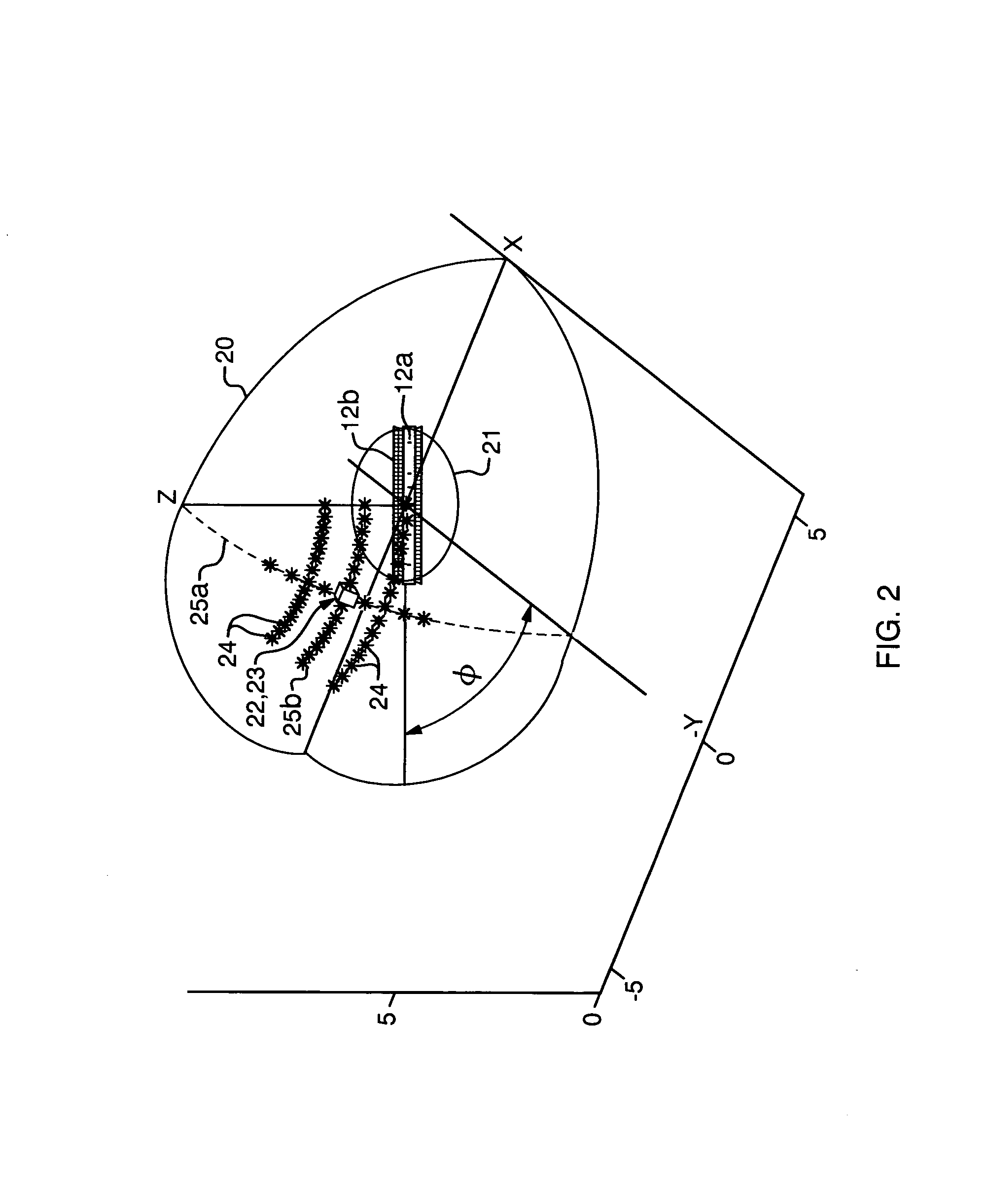Near field to far field DF antenna array calibration technique
a df antenna array and calibration technique technology, applied in the direction of antenna radiation diagrams, instruments, antennas, etc., can solve the problems of inability to test large antennas in the far field, complex processing solutions for most compact antenna range processing solutions, and serious limitations on the maximum size of antennas that can be measured
- Summary
- Abstract
- Description
- Claims
- Application Information
AI Technical Summary
Benefits of technology
Problems solved by technology
Method used
Image
Examples
Embodiment Construction
[0042]In FIG. 1 is shown a block diagram of a prior art direction finding (DF) system used for receiving and accurately interpreting radio frequency (RF) signals from a remote signal source 11. In actual operation signals received by DF antenna array 12 from a remote signal source 11 may be any one of a number of types of signals. For example, DF system 10 may be used in a communication intercept application in which the received signals are from, for example, aircraft or ground emitter produced RF communication transmissions in the VHF through L bands of the electromagnetic frequency spectrum. If DF system 10 is on an aircraft, an independent inertial navigational system 15 is also required in order to perform an accurate determination of the location of the aircraft so the signals from source 11 can be accurately determined.
[0043]DF system 10 includes a receiver 13 and a signal interception and DF system 14. Signal interception and DF system 14 uses a database 16 which is stored b...
PUM
 Login to View More
Login to View More Abstract
Description
Claims
Application Information
 Login to View More
Login to View More - R&D
- Intellectual Property
- Life Sciences
- Materials
- Tech Scout
- Unparalleled Data Quality
- Higher Quality Content
- 60% Fewer Hallucinations
Browse by: Latest US Patents, China's latest patents, Technical Efficacy Thesaurus, Application Domain, Technology Topic, Popular Technical Reports.
© 2025 PatSnap. All rights reserved.Legal|Privacy policy|Modern Slavery Act Transparency Statement|Sitemap|About US| Contact US: help@patsnap.com



